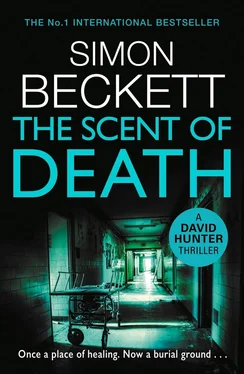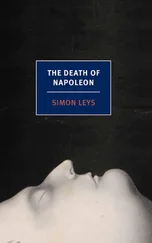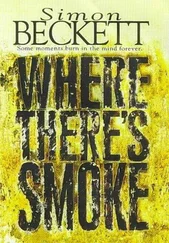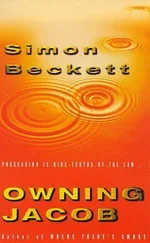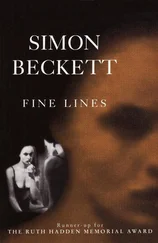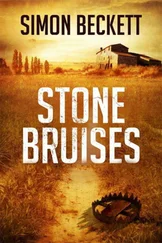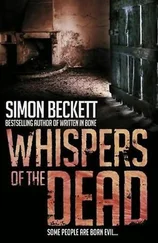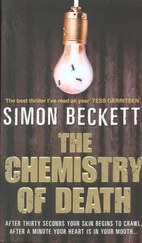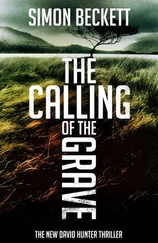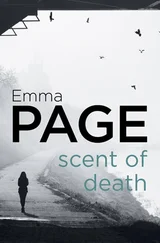The dusk had been turning to dark as I drove to St Jude’s. I didn’t know Blakenheath, but its streets were the usual multicultural mix. Takeaways and shops displaying West Indian, Asian and European signage jostled for space alongside dingy units that were shuttered and closed. The number of these increased the further out I went, until the streetlights lit only deserted streets. Then I came to an expanse of high wall that ran parallel to the road. It was topped with old iron railings, through which unpruned tree branches poked, as though trying to escape. I thought it might be a park until I came to an entrance. Curving above two tall stone gateposts was a rusted wrought-iron arch, on which St Jude’s Royal Infirmary was spelled out in large, ornate letters.
On the wall next to it, a more poignant message was written on a forlorn and ragged banner: Save St Jude’s .
A young police officer stood sentry next to one of the stone posts. I gave my name and waited until she’d checked my clearance. ‘Just follow the drive,’ she told me.
As I pulled through the archway my headlights illuminated a sign bearing a hospital map, grown so faded it was barely there. My initial impression of a park wasn’t so far off. Mature trees hid the boundary wall, and I guessed the site used to be filled with green spaces and hospital buildings. Now it was a wasteland. Whatever buildings once stood here had been demolished, leaving untidy mounds of brick and concrete on either side.
It was like driving through a bombed-out town, unlit and deserted. The beams from my headlights were the only relief from the darkness. The trees and high wall screened out light from the surrounding streets, making the grounds feel more isolated than they really were. Rounding a shadowy mound of rubble, I saw police cars and vans parked on the forecourt outside the surviving hospital building. It was Victorian, three storeys high with wide steps descending from a Grecian-style central portico. Boarded-up windows stared blankly from blackened stone walls, but despite its dilapidated state it still possessed a severe grandeur. There were elaborately carved cornices, while the portico was supported by fluted stone pillars. Above it all, the angular silhouette of a clock tower rose from the pitched roof, outlined against the night sky like a stern finger.
I gave my name again and was shown to a police trailer to change into coveralls and protective gear. Whelan met me on the steps leading up to the main hospital entrance, introducing himself as Ward’s deputy SIO. Covered with graffiti, the big double doors had been pushed right back. Inside it was cold and clammy. The air smelled strongly of damp, mould and urine. Lights had been set up in what had once been the foyer, revealing stained, sagging plaster and a debris-strewn floor. Off to one side was a glass-panelled cubicle with a sign above it proclaiming Medical outpatients .
But the beer cans and empty bottles that were scattered around, and the charred remains of campfires, showed that the hospital still had some occupants. My footsteps echoed hollowly as I made my way up the stairs that wound around a lift shaft, long disused. More lights had been set up on each landing, where dust-covered signs pointed off to X-ray, Endoscopy, ECG and other long-forgotten departments.
‘Typical hospital,’ Whelan said, out of breath when we reached the top of the stairs. Even though it was only three storeys, the high ceilings made it a long haul. ‘If you weren’t ill when you arrived, the climb’s enough to kill you.’
He set off down a long corridor, along which yet more lights had been lined. We passed abandoned wards, where small glass panels set in heavy doors gave a view into blackness. Plaster crunched underfoot, and in places the rotten ceiling had collapsed to expose bare wooden slats. There weren’t so many empty cans and bottles up here, but then it was a long way to climb without a good reason.
The lights ended at an extendable aluminium ladder, incongruously new and shiny in the squalid setting. It ran up into a rectangular access panel in the ceiling, from where the walkway of stepping plates had been laid down in the loft to where Ward and the rest of her team were waiting.
Along with the body.
I studied it again now, rubbing my head where I’d banged it on the roof timber.
‘We’re just about to make a start,’ Ward told me. ‘Do you know Professor Conrad?’
I did, but only by name. The forensic pathologist had already been an established figure in his field when I was first starting out in mine and had a fearsome reputation for his short temper. He’d be well into his sixties by now and didn’t appear to have mellowed with age. Bushy grey eyebrows were knitted in a frown as he regarded me from above his mask.
‘I’m glad you could finally join us.’
He had a dry, reedy voice that made it hard to tell if that was a rebuke or not. Once again, out of the corner of my eye I thought I saw movement in the loft’s shadows, but this time I ignored it. I’d embarrassed myself enough for one day.
Ward raised an eyebrow at me. ‘Well, since we’re all here, we’d best crack on. Come on, budge up.’
She gave a SOCO standing next to her an unceremonious nudge. There was a general shuffling as space was made for me. The stepping plates had been arranged around the plastic-wrapped body, providing a platform to work from. But the low roof timbers and chimney stack made it a tight squeeze, and it was hotter than ever under the surrounding lights.
‘The hospital’s been closed for years, so the only people using it have been rough sleepers and drug addicts,’ Ward said, as I moved closer for a better look. ‘There was a fair bit of dealing going on from here until the demolition work started on the site a few months back. We could be looking at this being either a fatal overdose or a falling-out someone tried to cover up.’
Neither were rare events. I considered the desiccated features half hidden in the plastic. ‘Who found it, one of the demolition crew?’
She shook her head. ‘They’re supposed to have checked the loft, but I doubt they came this far in. No, it was someone from the bat-conservation society. Came up here to do a survey and found more than he bargained for.’
‘Bats?’
‘A colony of long-eared ones, apparently.’ Her voice held a note of wry amusement. ‘They’re a protected species, so we’ve got to be careful not to disturb them.’
I glanced into the shadows above me. So I hadn’t been imagining the movement earlier.
‘The developers are planning to level the whole site and build a big office complex,’ Ward went on. ‘There’s been a lot of local opposition, so the bat thing was just the latest in a series of delays. The protesters are delighted because it’s meant a last-minute stay of execution for St Jude’s. Until the bats are rehoused, or whatever it is they do with them, the whole development’s ground to a halt.’
‘Fascinating as that may be, I cancelled a dinner engagement for this,’ Conrad said in clipped tones. ‘I’d appreciate not spending all night up here.’
Indifferent to the angry look Ward gave him, the pathologist stiffly lowered himself down next to the body. I went to the other side and knelt beside it as well. Surrounded by a halo of wispy hair, the face inside the plastic was wizened as parchment. The eye sockets were empty, and only stubs remained of the nose and ears. Beneath the loft’s pervasive smell of dust and old timber, another odour emanated from within the tarpaulin, sweet and dusty.
‘Clearly been dead for some time,’ Conrad said, as though passing comment on the weather. ‘Completely mummified, by the look of it.’
Not quite, I thought, but kept the thought to myself for now.
Читать дальше
